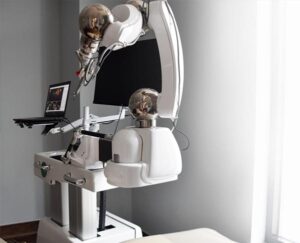
More and more major surgeries are being performed with the aid of robot guidance. You may have even seen stories in the news about doctors being able to complete something as delicate as open-heart surgery from hundreds of miles away thanks to this technology.
Thankfully, this level of progress can also be seen in dentistry, specifically in the realm of dental implant placement. How is it different compared to the traditional way of doing things, and more importantly, what are the benefits for you, the patient?
Traditional Implant Placement
In most dental offices, the dental implant placement process involves taking X-rays of the patient’s mouth, using this to plan the procedure, and then the oral surgeon actually positions the posts within the jawbone just using their eyes, lights, and various tools.
While millions of implants have been successfully placed this way, computer guidance adds a lot more precision and accuracy to the process, dramatically increasing the chances of success.
Computer-Guided Implant Placement
With computer-guided implant placement, the level of imaging captured ahead of the procedure is on a whole other level. The amount of detail and information an oral surgeon receives goes well beyond just showing the jawbone and nearby teeth. It reveals the quality of the bone, position of the sinuses, location of facial nerves, and allows them to determine the perfect position of the implant (both the angle and depth) down to the millimeter.
Not only that, but the technology enables your oral surgeon to have a real-time visual representation of your dental anatomy they can use as a reference while the implant itself is being placed. They can literally see a model of your jawbone so that absolutely nothing is left to chance.
A robotic arm even goes as far as guiding their hand so that the ideal angle and depth are achieved the first time, every time. The oral surgeon is in control, but they are given many, many more tools to ensure your procedure is flawless.
The Benefits of Computer-Guided Dental Implant Placement
- Allows your oral surgeon to work faster and more efficiently while being more accurate
- Leads to a more conservative procedure that shortens recovery time
- Proper placement increases the chance of long-term implant success
- In the chair, placement feels less invasive and is more comfortable
- Imaging allows the patient to know what to expect at every step of the procedure
- Makes it easier for the oral surgeon to explain how everything works
Pretty soon, all dental implants will be placed using computer guidance, but you don’t have to wait—you can take advantage of this technology and recover your smile in the most effective way possible right now.
About the Author
If you’re looking for an oral surgeon who’s ahead of the curve with new technology, Dr. J. Darrell Steele is the definition of a trendsetter. While earning his doctorate from the Baylor College of Dentistry, he became increasingly interested in dental implants. He went on to be the first oral surgeon in the Dallas/Fort Worth area to use the YOMI dental implant robot for placement. Call (972) 315-3355 or click here to schedule your consultation at Steele Oral Surgery to talk about recovering your missing teeth.







